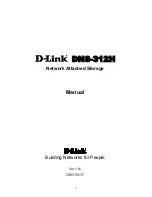
DL4300 Appliance
Protecting a machine
179
CAUTION:
Rapid Recovery uses AES 256-bit encryption in the Cipher Block Chaining (CBC) mode
with 256-bit keys. While using encryption is optional, Dell highly recommends that you establish an
encryption key, and that you protect the passphrase you define. Store the passphrase in a secure
location as it is critical for data recovery. Without a passphrase, data recovery is not possible.
14. On the Encryption page, select one of the following options:
•
If you want to encrypt this protected machine using an encryption key that is already defined on this Rapid
Recovery Core, select Encrypt data using an existing Encryption key, and then select the appropriate key from the
•
If you want to add a new encryption key to the Core and apply that key to this protected machine, then enter the
information as described in the following table.
Table 66. Encryption key settings
Text Box
Description
Name
Enter a name for the encryption key.
Encryption key names must contain between 1 and
130 alphanumeric characters. You may not include
special characters such as the back slash, forward
slash, pipe, colon, asterisk, quotation mark, question
mark, open or close brackets, ampersand or hash.
Description
Enter a comment for the encryption key.
This information appears in the Description field
when viewing encryption keys from the Core
Console.
Passphrase
Enter the passphrase used to control access.
Best practice is to avoid special characters listed
above.
Record the passphrase in a secure location. Dell
Support cannot recover a passphrase. Once you
create an encryption key and apply it to one or more
protected machines, you cannot recover data if you
lose the passphrase.
Confirm Passphrase
Re-enter the passphrase you just entered.
15. Click Finish to save and apply your settings.
The first time protection is added for a machine, a base image (that is, a snapshot of all the data in the
protected volumes) will transfer to the repository on the Rapid Recovery Core following the schedule you
defined, unless you specified to initially pause protection.
Parent topic
Protecting a cluster
This topic describes how to add a cluster for protection in Rapid Recovery . When you add a cluster to protection,
you need to specify the host name or IP address of the cluster, the cluster application, or one of the cluster nodes
or machines that includes the Rapid Recovery Agent software.
















































